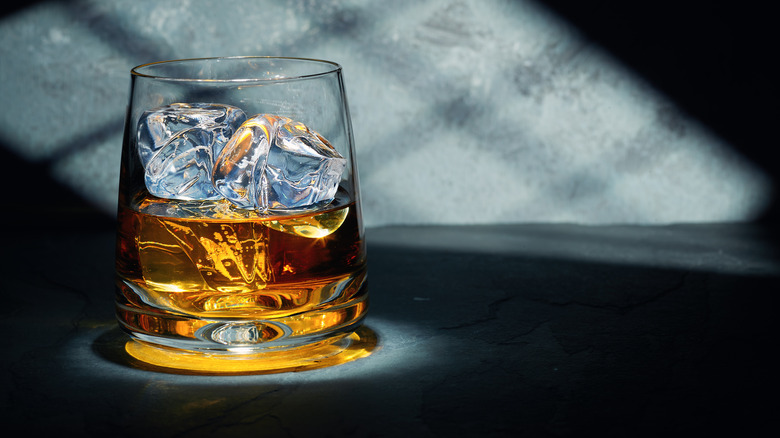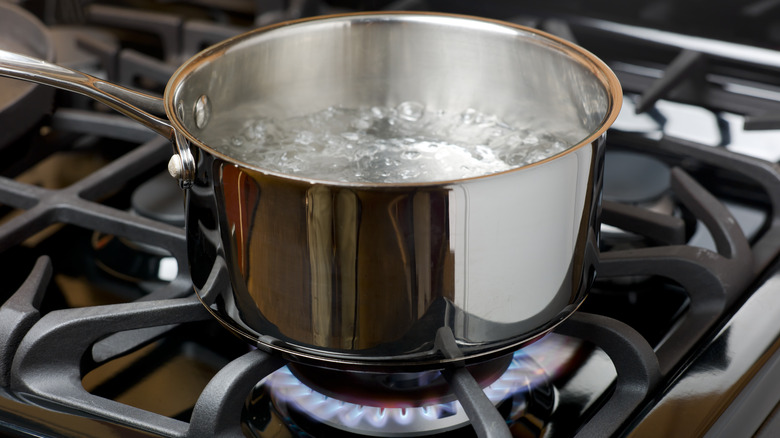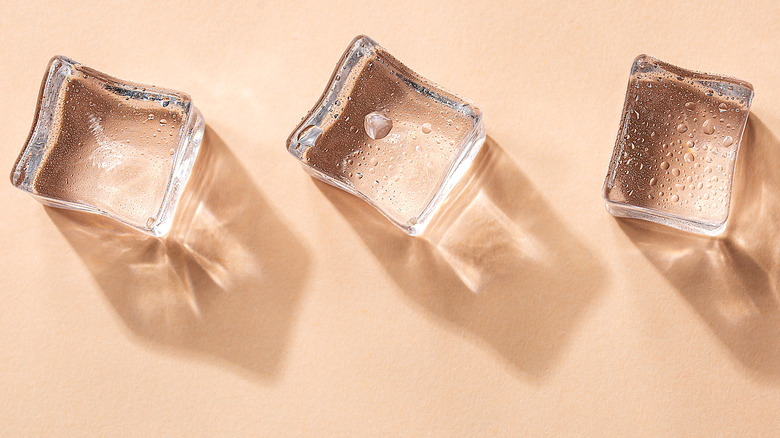The Simple Hack For Fancy Crystal-Clear Ice Cubes
Do you enjoy serving homemade cocktails to guests during dinner parties and other gatherings? If you do, then the quality of ice is probably a recurring concern in your household. For many individuals, obtaining clear ice for alcoholic beverages might seem like an impossible feat, and cloudy ice can detract from the visual appeal of your meticulously crafted cocktails. In such cases, there's a simple hack you can attempt to improve the clarity of your ice cubes. Boiling the water before freezing it can result in significantly clearer ice cubes that are certain to delight your family and friends.
Cloudiness in ice can occur for all sorts of reasons. The primary culprit is the air bubbles that naturally form within ice. These air bubbles cause light to scatter as it passes through the ice, preventing the cubes from attaining a pleasing transparent appearance. Additionally, tap water often contains a high concentration of minerals. These minerals, like air bubbles, scatter light, underscoring the importance of using filtered water when making ice cubes and taking the extra step to boil the water beforehand.
For clear ice cubes, use filtered water
Boiling water before freezing is effective at creating clear ice cubes, but this hack isn't entirely foolproof. While boiling water can effectively reduce the presence of impurities, it may not eliminate all of them. Additionally, there's still a possibility that air could find its way into the cubes even after boiling. Fortunately, there are steps you can take to enhance the likelihood of achieving exceptionally clear ice cubes.
For instance, starting with filtered or distilled water significantly reduces the risk of mineral impurities affecting the appearance of your ice cubes. Likewise, boiling the water not just once, but twice, can contribute to better clarity. In this case, allow the water to cool before boiling it a second time. You can also prevent air from entering the water by covering the ice cube tray. Simply secure the tray with plastic wrap to keep air out as the water freezes.
Directional freezing is another method to try
For achieving the clearest ice cubes possible, directional freezing is another excellent option to consider. This method draws inspiration from nature, particularly the way ice on a frozen lake exhibits crystal clarity at the top. As the cold air chills the surface, it pushes air in the water towards the sides and bottom. Since air bubbles are a significant contributor to ice cloudiness, this natural dispersion of air naturally enhances clarity.
Replicating these conditions in a freezer presents a bit of a challenge because the water is exposed to cold temperatures from all sides, unlike a body of water where cold air affects only the top. Accordingly, you need to shield the container in which you're freezing the ice from cold air on all sides while leaving the top exposed. While there are ice machines capable of directional freezing available for purchase, they can be prohibitively expensive. Alternatively, you can use an insulated cooler with an open top, ensuring that the cold temperatures freeze the surface first and move air bubbles to the lower levels. If you're dedicated to perfecting your cocktail craft, investing a little extra effort in making ice cubes will undoubtedly be worthwhile.


